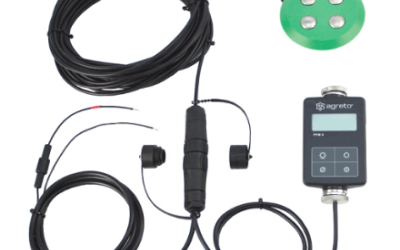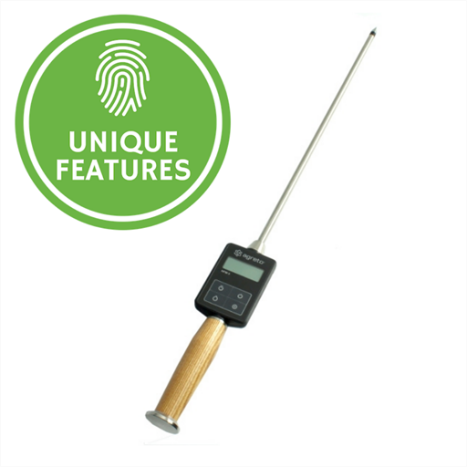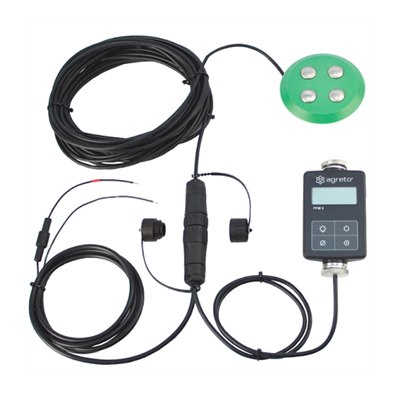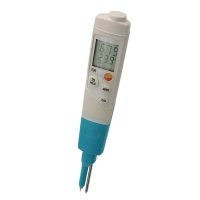Portable Hay Moisture Meters vs. Baler Units

It's undeniable. Moisture has a significant impact on the stability, palatability, and safety of hay. Farmers who use modern technology can accurately determine the moisture content of hay at the touch of a button.
It's fantastic that today you can select from such a wide variety of hay moisture meters. It means there has to be a unit that's perfect for your needs. The challenge is to select the best model. One issue challenging many farmers is whether to choose a portable or baler-mounted hay moisture meter.
The Instrument Choice scientists have made a comparison of portable and baler-mounted hay moisture meters. They looked and all the pros and cons before deciding to share it so that farmers can make a well-informed decision.
About Hay Moisture
Hay moisture has a direct impact on hay quality. Where hay moisture is too high, the product will be less palatable, develop mould (and potentially mycotoxins), and excessive humidity can cause thermal expansion, which in extreme cases, can lead to combustion. If the hay moisture is too low, the product will have reduced nutritional value and be less palatable.
Handheld Hay Moisture Meters
Handheld hay moisture meters are generally portable, easy to use, and adaptable devices.
Pros
Handheld units allow you to take moisture readings of the hay in:
- A windrow, before baling commences, so you can avoid baling problems from the "get-go;" and,
- Finished bales - to double-check moisture levels before storage.
Cons
- As the working day progresses, the moisture content of hay can change significantly. With a handheld meter, you can't access real-time information as baling occurs;
- nless you stop baling at regular intervals to take current measurements, which is time-consuming and will result in reduced output.
Handheld Unit Example:
Hfm II Hay Moisture Meter / Straw Moisture Meter 50cm
Product Code: AGFH0010
The AGRETO handheld hay and straw moisture meter HFM II is a professional measuring instrument designed for determining moisture levels and temperature levels in baled hay, straw, and silage.
The AGFH0010 features a robust construction from high-quality materials, a 50cm long probe, dustproof casing, and intuitive four-button design. This accurate hay moisture meter takes the guesswork out of hay moisture measurements before and after the baling.
Sensor Details: 50cm spear tip probe
Moisture Range: 9-50%
Baler Unit
Baler units are hay moisture meters that are fixed to a baler and take hay moisture measurements in real-time as hay is collected and baled.
Pros of Baler Units
- A baler unit can give instant, valuable hay moisture information as you harvest. You will know if the moisture level within the hay is too high within seconds so that you can make swift corrective actions.
- Unlike many portable meters, which are usually battery-powered, many baler units can be linked up and powered by the tractor.
Cons of Baler Units
- Without being able to test the windrows before baling, you will be harvesting before you can take a measurement. You may not know there is an issue until you made some bales.
- Baler units cannot recheck bales before storage, meaning there is no way to ensure the moisture level has remained at a safe level before storage.
Baler Unit Example
AGRETO PFM II Baler Mounted Moisture Meter
Product Code: IC-AGFP0010
The IC-AGFP0010 is a professional hay moisture content measuring instrument, designed to be retrofitted onto almost any make of modern hay baler.
Built from hardy materials and featuring a splash and shockproof display unit, this hay measuring system is designed for many years of practical field use. By taking internal measurements 25 times per second and displaying the average in a set interval or 1, 2, or 5 seconds, you can respond to any issues at the earliest opportunity.
Sensor Details: 110mm diameter sensor plate with 12m sensor cable
Moisture Range: 9 to 70%
Conclusion
Handheld meters and baler units both have pros and cons. However, it does not mean you have to select one over the other. Instrument Choice is seeing more and more farmers choosing to invest in both types of meters to get a complete picture of their hay moisture content so they can better manage their harvesting risk. Measuring hay moisture before, during, and after baling is the perfect way to create and then protect a stable, palatable, and safe product.
Browse the full range of hay moisture meters, click here.
If you would like any further information about the products mentioned above or you need help finding the best hay meter for your application, contact an Instrument Choice scientist by calling 1300 737 871 or email us at [email protected]. We're here to help!
Also interesting
Australians are among the highest users of technology, and E-Waste is one of the fastest-growing types of waste.
Did you know that you can recycle your unwanted test and measurement meters anytime at Instrument Choice for free? As long as they are within the field of products we sell, we'll recycle them for you!

pH levels can affect food making in several ways. In Australia, a food pH meter is a vital tool for anyone involved in producing food - whether you are a serious home chef, a food scientist or a manager of a large-scale food processing facility. This is because pH can impact food flavour, texture, appearance, shelf stability and the fermentation. What’s more, there are specific pH limits and guidelines set by Food Standards Australia New Zealand (FSANZ) to control common foodborne pathogens when creating or using food products such as acidified rice in sushi, non-commercially canned fruits and vegetables, fermented milk or yogurt, or the acidification of raw egg.
This article introduces what pH is, and lists how pH can affect food quality while providing examples of the tools needed for measuring pH to make foods stable, safe and delicious.

